Forums
- Forums
- Duggy's Reference Hangar
- RAF Library
- Armstrong Whitworth Albemarle
Armstrong Whitworth Albemarle
Post a reply
- Go to Previous topic
- Go to Next topic
- Go to Welcome
- Go to Introduce Yourself
- Go to General Discussion
- Go to Screenshots, Images and Videos
- Go to Off topic
- Go to Works in Progress
- Go to Skinning Tips / Tutorials
- Go to Skin Requests
- Go to IJAAF Library
- Go to Luftwaffe Library
- Go to RAF Library
- Go to USAAF / USN Library
- Go to Misc Library
- Go to The Ops Room
- Go to Made in Germany
- Go to Campaigns and Missions
- Go to Works in Progress
- Go to Juri's Air-Raid Shelter
- Go to Campaigns and Missions
- Go to Works in Progress
- Go to Skinpacks
- Go to External Projects Discussion
- Go to Books & Resources
-
4 years agoFri Oct 21 2022, 09:36pmDuggy
 Main AdminThe Armstrong Whitworth A.W.41 Albemarle was a British twin-engine transport aircraft that entered service during the Second World War. Designed as a medium bomber, the Albemarle was used for general and special transport duties, paratroop transport and glider towing. Albemarle squadrons participated in Normandy and the assault on Arnhem during Operation Market Garden.
Main AdminThe Armstrong Whitworth A.W.41 Albemarle was a British twin-engine transport aircraft that entered service during the Second World War. Designed as a medium bomber, the Albemarle was used for general and special transport duties, paratroop transport and glider towing. Albemarle squadrons participated in Normandy and the assault on Arnhem during Operation Market Garden.
Background
Air Ministry Specification B.9/38 required a twin-engine medium bomber of wood and metal construction, that could be built by manufacturers outside the aircraft industry and without using light alloys. The Air Ministry was concerned that if there was a war, the restricted supply of materials might affect construction of bombers.
Armstrong Whitworth, Bristol and de Havilland were approached for designs. Bristol proposed two designs - a conventional undercarriage and an 80 ft (24 m) wingspan capable of 300 mph and a tricycle undercarriage design with 70 ft (21 m) span with a maximum speed of 320 mph (510 km/h). Both designs, known as the Type 155, used two Bristol Hercules engines. The Armstrong Whitworth AW.41 design used a tricycle undercarriage and was built up of sub-sections to ease manufacture by firms without aircraft construction experience. The AW.41 was designed with Rolls-Royce Merlin engines in mind but with Bristol Hercules as an alternative ("shadow") engine.
In June 1938, mock-ups of both the AW.41 and Bristol 155 were examined and new specifications B.17/38 and B.18/38 were drawn up for the respective designs. De Havilland did not submit a design. The specification stipulated 250 mph (400 km/h) at 15,000 ft (4,600 m) economical cruise while carrying 4,000 lb (1,800 kg) of bombs. Bristol was already busy with other aircraft production and development and stopped work on the 155. Changes in policy made the Air Staff reconsider the Albemarle as principally a reconnaissance aircraft capable of carrying out bombing. Among other effects, this meant more fuel to give a 4,000 mi (6,400 km) range. An upper dorsal turret and a (retractable) ventral turret for downward firing were added. In October 1938, 200 aircraft were ordered "off the drawing board" (i.e. without producing a prototype). The aircraft was always expected to be of use as a contingency and to be less than ideal.
Design and development
The Albemarle was a mid-wing, cantilever monoplane with twin fins and rudders. The fuselage was built in three sections; the structure being unstressed plywood over a steel tube frame. The forward section used stainless steel tubing to reduce interference with magnetic compasses. It had a Lockheed hydraulically operated, retractable tricycle undercarriage, the main wheels retracting back into the engine nacelles and the nose wheel retracting backwards into the front fuselage.
The two pilots sat side by side with the radio operator behind the pilots and the navigator in the nose forward of the cockpit. The bomb aimer's sighting panel was incorporated into the crew hatch in the underside of the nose. In the rear fuselage were glazed panels for a "fire controller" to coordinate the turrets against attackers. The dorsal turret was a Boulton-Paul design with four Browning machine guns. A fairing forward of the turret automatically retracted as the turret rotated to fire forwards. Fuel was in four tanks and additional tanks could be carried in the bomb bay. A notable design feature of the Albemarle was its undercarriage, which included a retractable nose-wheel (in addition to a semi-concealed "bumper" tail-wheel). It was the first British-built aircraft with this configuration to enter service with the Royal Air Force.
The original bomber design required a crew of six including two gunners; one in the four-gun dorsal turret and one in a twin-gun ventral turret but only the first 32 aircraft, the Mk I Series I, were produced like this and they were only used as bombers on two occasions. The Albemarle was considered inferior to other aircraft already in service, such as the Vickers Wellington. Later aircraft were built as transports, called either "General Transport" (GT) or "Special Transport" (ST). When used as a paratroop transport, ten fully armed troops could be carried. The paratroopers were provided with a dropping hatch in the rear fuselage and a large loading door in the fuselage side.
The production run of 600 Albemarles was assembled by A.W. Hawksley Ltd of Gloucester, a subsidiary of the Gloster Aircraft Company formed to build the Albemarle. Gloster was a part of the Hawker Siddeley group which included Armstrong Whitworth. Individual parts and sub-assemblies for the Albemarle were produced by about 1,000 subcontractors.
Operational History
The first Albemarle (P1360) first flew on 20 March 1940 at Hamble Aerodrome, where it was assembled by Air Service Training and was the first of two prototypes built by Armstrong Whitworth. To improve take-off, a wider span 77 ft (23 m) wing was fitted after the eighth aircraft. Plans for using it as a bomber were dropped due to delays in reaching service, it was not an improvement over current medium bombers (such as the Vickers Wellington) and it had obvious shortcomings compared to the four-engined heavy bombers about to enter service but it was considered suitable for general reconnaissance.
The Soviet Air Force placed a contract for delivery of 200 Albemarles in October 1942. An RAF unit - No. 305 FTU, at RAF Errol near Dundee - was set up to train Soviet ferry crews. During training, one aircraft was lost with no survivors. The first RAF squadron to operate the Albemarle was No. 295 at RAF Harwell in January 1943. Other squadrons to be equipped with the Albemarle included No. 296, No. 297 and No. 570. The first operational flight was on 9 February 1943, by a 296 Squadron Albemarle which dropped leaflets over Lisieux in Normandy.
A Soviet-crewed Albemarle flew from Scotland to Vnukovo airfield, near Moscow, on 3 March 1943, and was followed soon afterwards by eleven more aircraft. Two Albemarles were lost over the North Sea, one to German fighters and the other to unknown causes. Tests of the surviving Albemarles revealed their weaknesses as transports (notably the cramped interior) and numerous technical flaws; in May 1943, the Soviet government suspended deliveries and eventually cancelled them in favour of abundant American Douglas C-47 Skytrains. (The Soviet camp at Errol Field continued until April 1944: apparently the Soviet government hoped to secure de Havilland Mosquitos. At least two of the Albemarles that reached the USSR were lost in accidents and the surviving aircraft were retired two years later.
From mid-1943, RAF Albemarles took part in many British airborne operations, beginning with the invasion of Sicily. The pinnacle of the aircraft's career was a series of operations for D-Day, on the night of 5/6 June 1944. 295 and 296 Squadrons sent aircraft to Normandy with the pathfinder force, and 295 Squadron claimed to be the first squadron to drop Allied airborne troops over Normandy. On 6 June 1944, four Albemarle squadrons and the operational training unit sent aircraft during Operation Tonga; 296 Squadron used 19 aircraft to tow Airspeed Horsas; 295 Squadron towed 21 Horsas, although it lost six in transit; 570 Squadron sent 22 aircraft with ten towing gliders; and 42 OTU used four aircraft. For Operation Mallard on 7 June 1944, the squadrons towed 220 Horsas and 30 Hamilcars to Normandy. On 17 September 1944, during Operation Market Garden at Arnhem, 54 Horsas and two Waco Hadrian gliders were towed to the Netherlands by 28 Albemarles of 296 and 297 squadrons; 45 aircraft were sent the following day towing gliders. Of the 602 aircraft delivered, 17 were lost on operations and 81 lost in accidents. The last Royal Air Force unit to operate the type was the Heavy Glider Conversion Unit, which replaced the Albemarles with Handley Page Halifaxes in February 1946 and the type was retired from operational units.
Variants
Over the course of its production life, a number of variants of the Albemarle were built:
ST Mk I ? 99 aircraft
GT Mk I ? 69
ST Mk II ? 99
Mk III ? One prototype only.
Mk IV ? One prototype only.
ST Mk V ? 49
ST Mk VI ? 133
GT Mk VI ? 117
Most Marks were divided into "Series" to distinguish differences in equipment. The ST Mk I Series 1 (eight aircraft) had the four gun turret replaced with hand-operated twin-guns under a sliding hood. As a special transport, a loading door was fitted on the starboard side and the rear fuel tank was removed. The 14 ST Mk I Series 2 aircraft were equipped with gear for towing gliders. The Mk II could carry 10 paratroops and the Mk V was the same but for a fuel jettison system. All production Albemarles were powered by a pair of 1,590 hp (1,190 kW) Bristol Hercules XI radial engines. The Mk III and Mk IV Albemarles were development projects for testing different powerplants; the former used the Rolls-Royce Merlin III and the latter used the 1,600 hp (1,200 kW) Wright Double Cyclone.








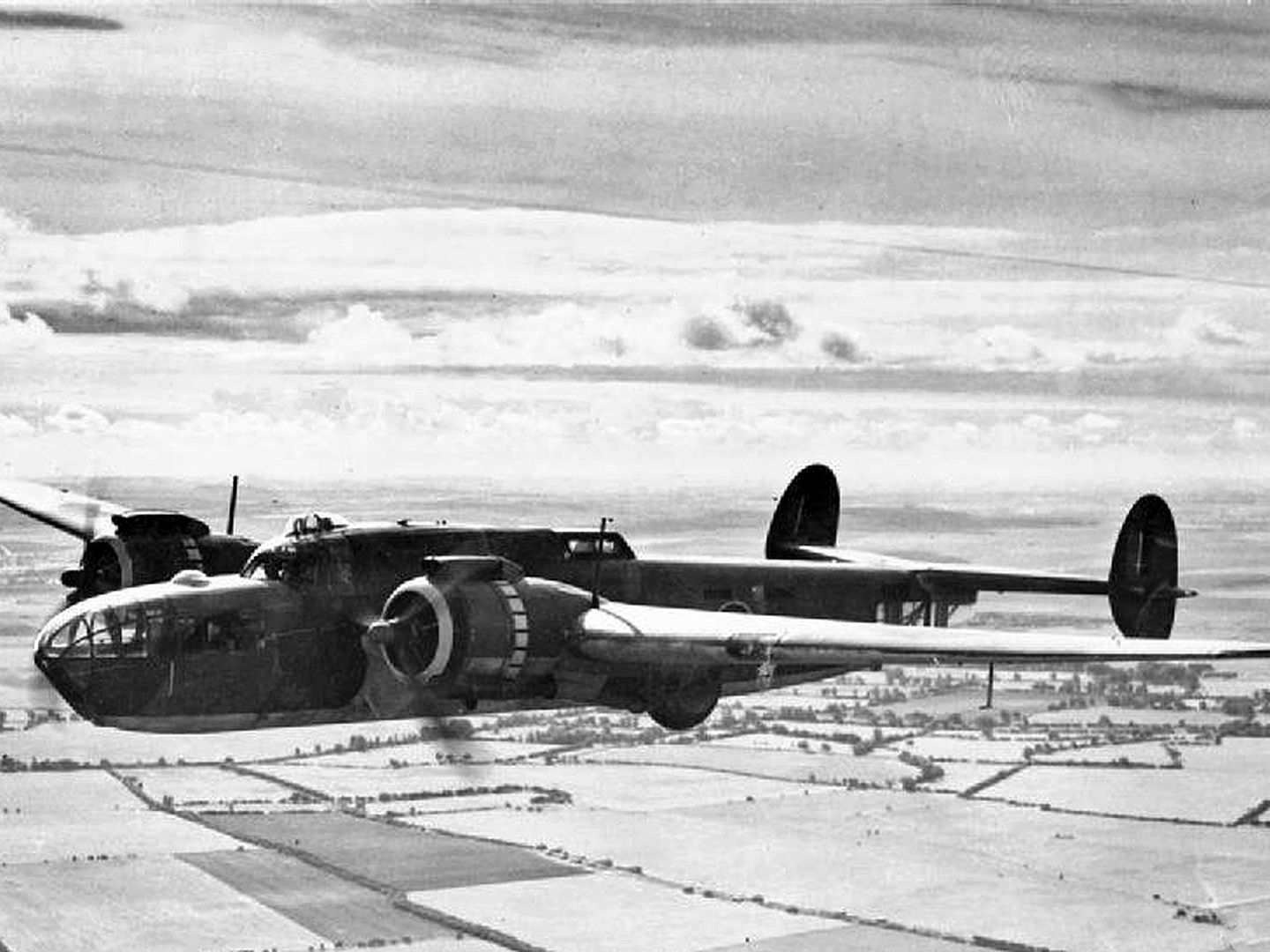
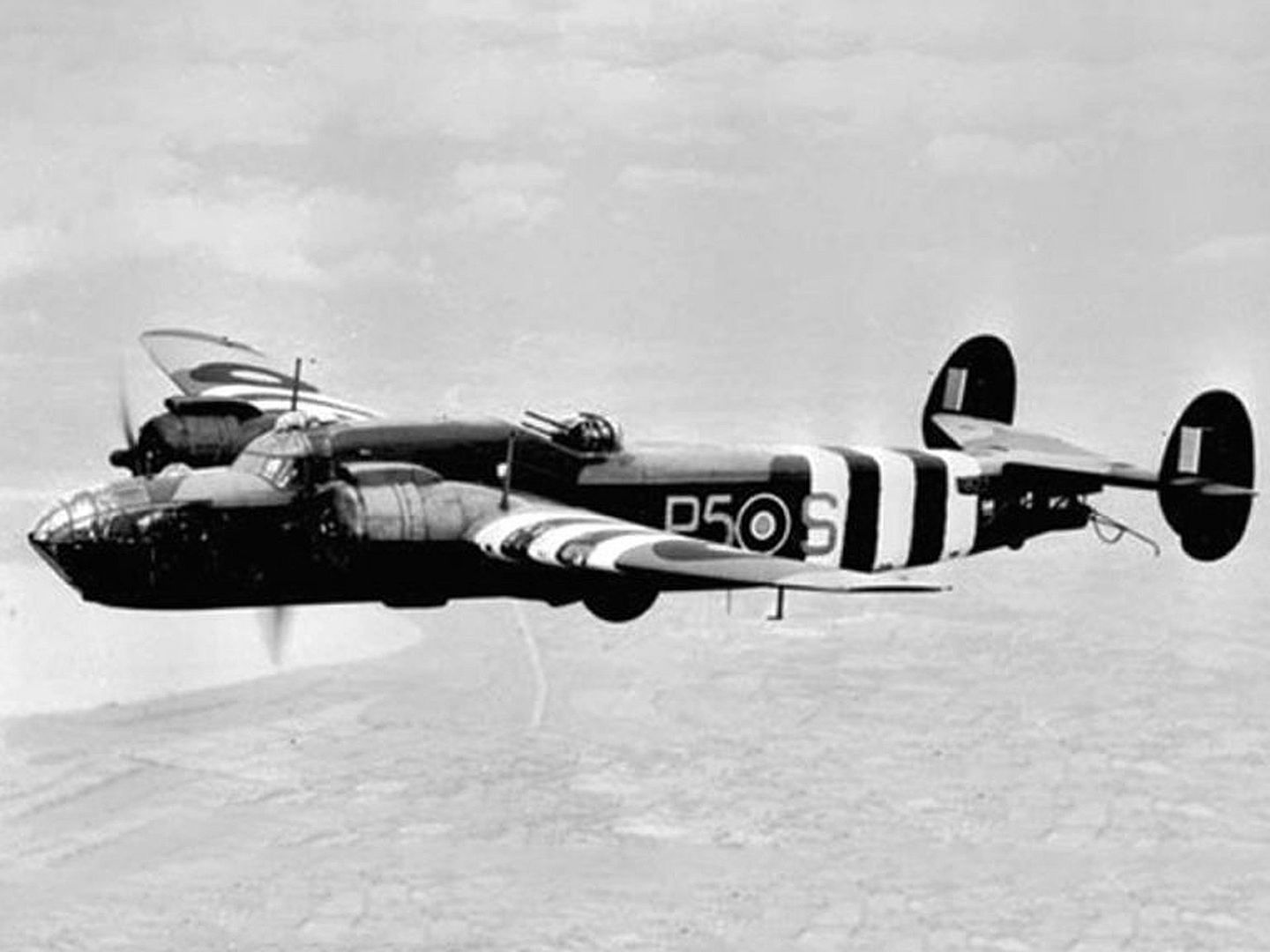




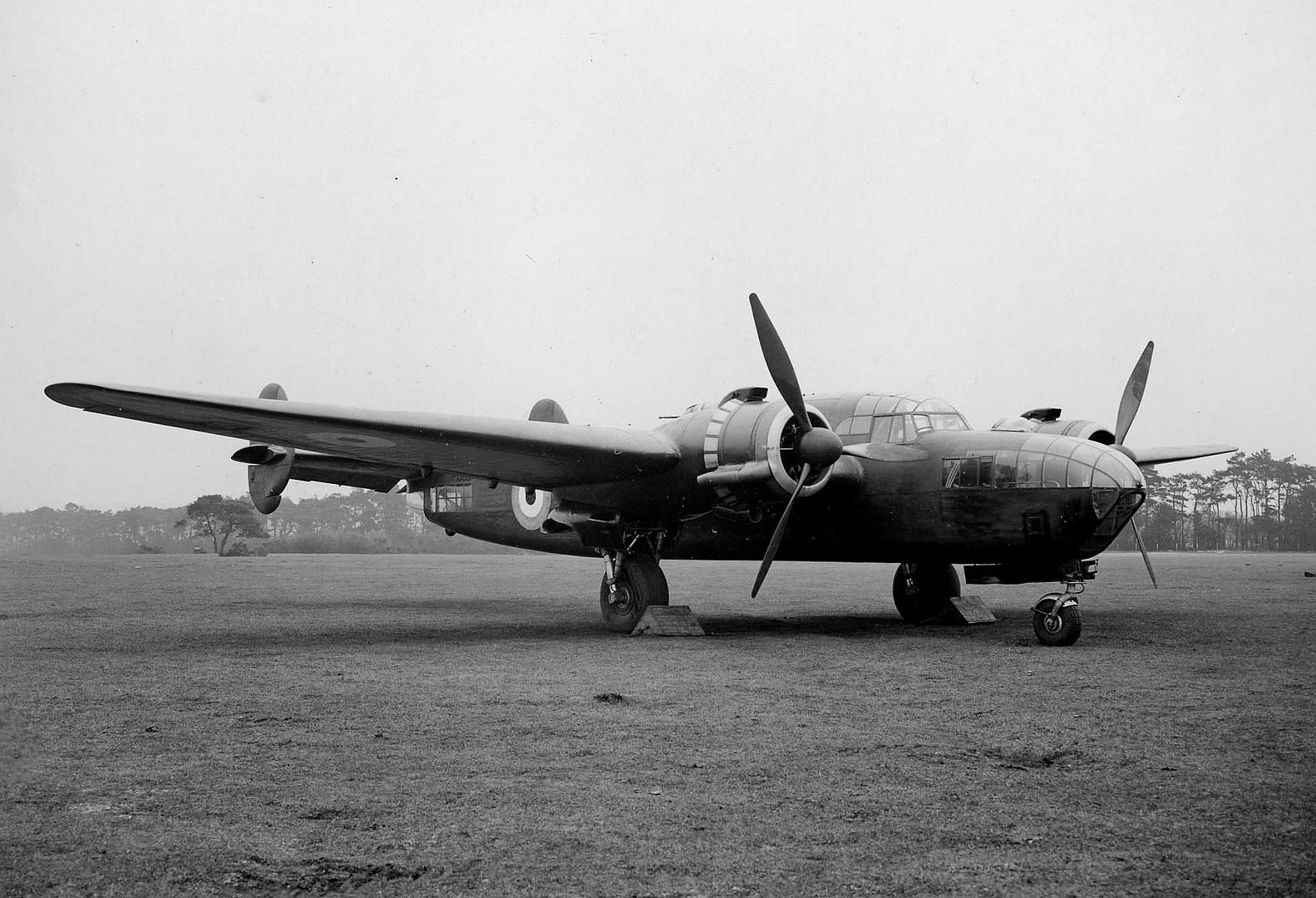
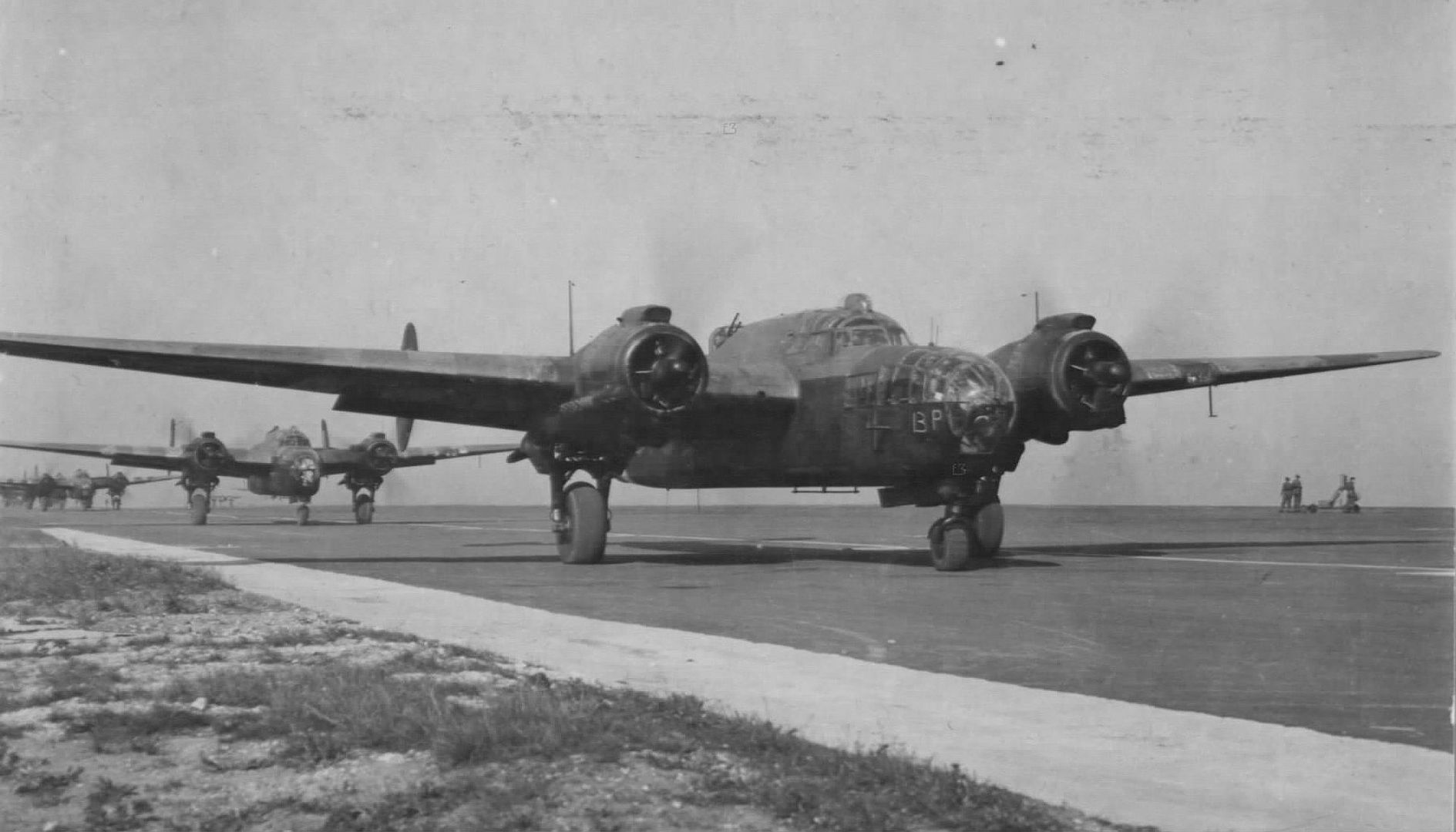
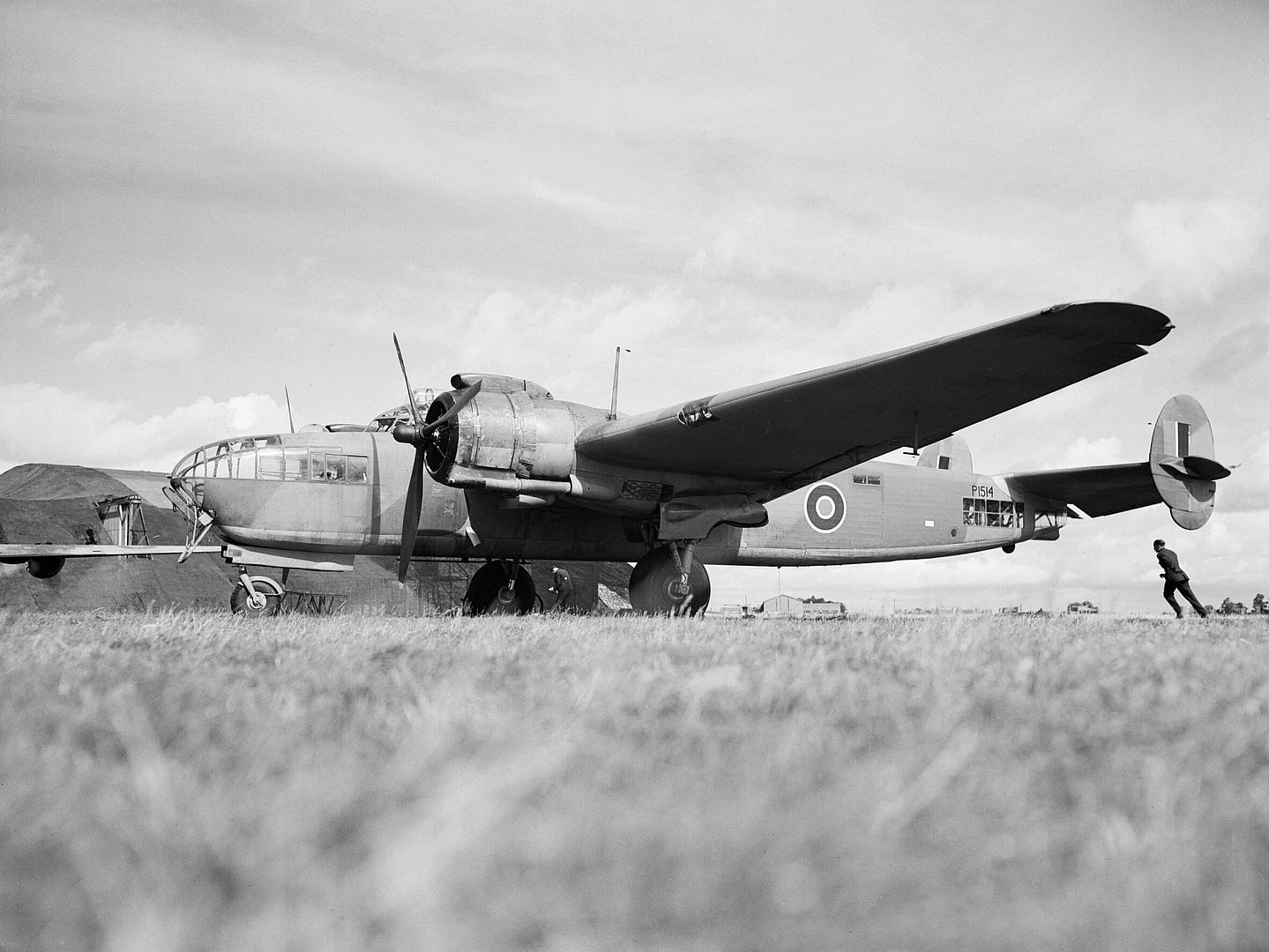
Specifications (ST Mk I)
General characteristics
Crew:
4 (2 pilots, navigator and radio operator) in Transport configuration
Six (2 pilots, navigator/bomb-aimer, radio operator and 2 gunners) in Bomber configuration
Capacity: 10 troops
Length: 59 ft 11 in (18.26 m)
Wingspan: 77 ft 0 in (23.47 m)
Height: 15 ft 7 in (4.75 m)
Wing area: 803.5 sq ft (74.65 m2)
Empty weight: 25,347 lb (11,497 kg)
Fuel capacity: 769 imp gal (924 US gal; 3,500 L) normal, 1,399 imp gal (1,680 US gal; 6,360 L) with auxiliary tanks
Powerplant: 2 ? Bristol Hercules XI 14-cylinder air-cooled radial engines, 1,590 hp (1,190 kW) each
Propellers: 3-bladed de Havilland Hydromatic
Performance
Maximum speed: 265 mph (426 km/h, 230 kn) at 10,500 ft (3,200 m)
Cruise speed: 170 mph (270 km/h, 150 kn)
Stall speed: 70 mph (110 km/h, 61 kn) (flaps and undercarriage down)[13]
Range: 1,300 mi (2,100 km, 1,100 nmi)
Service ceiling: 18,000 ft (5,500 m)
Rate of climb: 980 ft/min (5.0 m/s)
Armament
Guns:
4 ? .303 in (7.7 mm) Browning machine guns in dorsal turret.
2 ? .303 in (7.7 mm) machine guns in ventral turret (first prototype only)
Bombs: Internal bomb bay for 4,500 lb (2,000 kg) of bombs
Post a reply
- Go to Previous topic
- Go to Next topic
- Go to Welcome
- Go to Introduce Yourself
- Go to General Discussion
- Go to Screenshots, Images and Videos
- Go to Off topic
- Go to Works in Progress
- Go to Skinning Tips / Tutorials
- Go to Skin Requests
- Go to IJAAF Library
- Go to Luftwaffe Library
- Go to RAF Library
- Go to USAAF / USN Library
- Go to Misc Library
- Go to The Ops Room
- Go to Made in Germany
- Go to Campaigns and Missions
- Go to Works in Progress
- Go to Juri's Air-Raid Shelter
- Go to Campaigns and Missions
- Go to Works in Progress
- Go to Skinpacks
- Go to External Projects Discussion
- Go to Books & Resources
